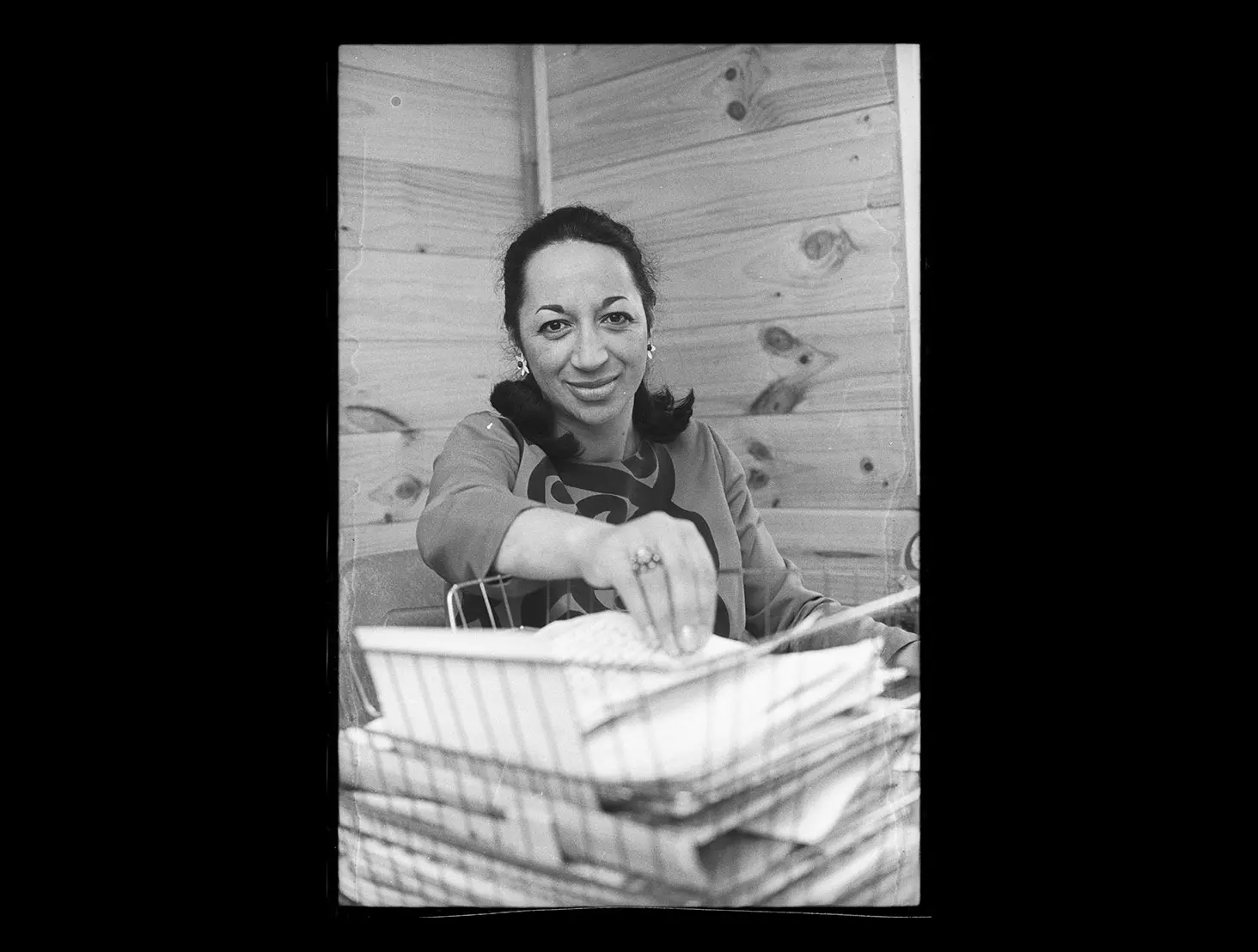Read a story about MP Tirikatene-Sullivan and her passion for Māori design
In 1967, Whetu Tirikatene-Sullivan (Ngāi Tahu, Ngāti Kahungunu; 1932–2011) was a new Member of Parliament, adjusting to life as the representative for the Southern Māori electorate. She had won a by-election following the death of her father, Eruera Tirikatene, who had held the seat for the Labour Party since 1932. One day, the mail arriving in her office at Parliament included a parcel containing 3 yards (2.7 metres) of white linen printed by the Ngāti Kahungunu artist Sandy Adsett. The black design was inspired by the mangōpare (hammerhead shark) pattern, referencing the shark and its reputation for strength. Adsett wrote, ‘I thought the fighting Māori proverb connected with it lent itself to the work you do for our people … it is my own interpretation of the design.’
Writing to friends in 1970 (in a letter from the Turnbull Library’s collection of the journalist Elsdon Craig’s papers), Tirikatene-Sullivan recalled her excitement: ‘[It] was a spectacular piece, bold and definite in its black stylised Maori motif and was the most exciting thing that happened to me that year … this was the catalyst for my renewed interest in promoting the use of Maori motif in fabric.’
Tirikatene-Sullivan used the fabric to make up a dress, which she wore to the opening of Parliament in 1968. She asked Adsett to design further pieces, which she also had made up into dresses. Fascinated by Māori design from the age of 13, the politician was also a knitter and incorporated Māori motifs into sweaters she created for her husband, Denis Sullivan. She encouraged young Māori to make contemporary clothing and jewellery using Māori designs, and she opened her own fashion boutique in Wellington.
Tirikatene-Sullivan’s 29-year career as the Labour member for Southern Māori (later Te Tai Tonga) was marked by many milestones. These included being the first New Zealand politician to give birth while holding office, and being the only woman in the Cabinet of the 1972 Kirk Labour Government. When she lost her seat to the New Zealand First party in 1996, she was the longest-serving woman politician in the house.
Alongside these achievements, a case can be made for Tirikatene-Sullivan’s enduring impact on popular culture and fashion in this country, and as a champion of Māori design in clothing at a time when this was an unusual and bold position to take.
Story written by: Paul Diamond
Copyright: Turnbull Endowment Trust
Find out more
Explore the Alexander Turnbull Library collections further: Whetu Tirikatene-Sullivan.
Topic Explorer has Māori creators, leaders and heroes.
Many Answers has Māori leaders and heroes.
Want to share, print or reuse one of our images? Read the guidelines for reusing Alexander Turnbull Library images.
Curriculum links
